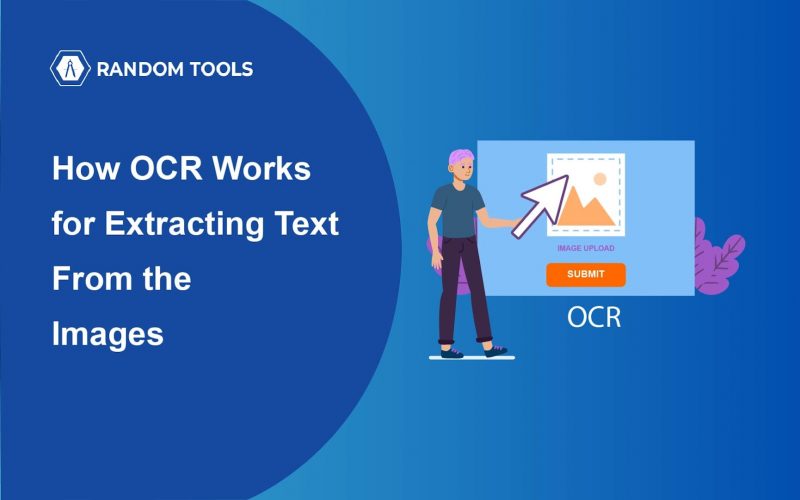The trend of extracting or copying text pieces from physical or digital form images is tremendously increasing. This is because text or pieces of information printed on images are not possible to edit as well as share.
But, after extracting that text from images, people can edit or share them easily. Moreover, the extracted or electronic text pieces are searchable and more accessible to store.
The most prominent technology that is utilized for data extraction from images is known to be OCR tech. “Optical Character Recognition” (OCR) is a technology used to scan and convert written data in a physical document or its digital image into an editable text file—the technology functions based on advanced NLP (Natural Language Processing) algorithms.
These algorithms help the OCR tool and devices understand human-written text in an image. After understanding these texts, the tool converts them into a digital document file that a computer can read, edit, and store easily.
In this blog, we will describe the whole process of an OCR extracting text from images in detail. But before we do that, let’s discuss OCR a little more.
What is OCR Technology-A Short Overview
OCR is a technology that detects text in a digital image and converts it into an editable text file. The image can be a physical document or a digitally designed infographic (basically any image containing text).
Remember: The OCR technology alone cannot do any extraction. Experts have integrated the OCR with online tools to enable this technology for data or text extraction from images. These tools are known as image-to-text converting tools.
Moreover, the technology has numerous applications and has become much more advanced recently; its core functionality is pretty simple. Now, we will discuss step-by-step how OCR turns an image into a text format.
How is text extracted from an image using OCR?
As mentioned, OCR employs NLP algorithms to understand and extract text from an image. But why use NLP? It is simple. You see, computers are not designed to understand human written language. This is because they function in binary codes.
This means that the computer will be unable to detect the data written in human language, English, or images in the first place. The NLP algorithms that OCR uses to understand this data and compare it with the fed dataset.
If the text in an image matches the text in the dataset of an online OCR tool, it converts it into a document file in editable or electronic words.
That’s it. That’s how an OCR converts an image into text. Now, let’s study the whole process step-by-step.
Step 1: Optimizing the Received Image-Pre processing by OCR
People input almost every kind of image in the OCR tool. It may be distorted, low-quality, or have dim or unscannable texts. That’s why the OCR tool pre-processes the received image to optimize it for upcoming steps.
Here’s how it does it:
- Reduce Noise: The OCR tool processes the image to reduce any noise. This helps it understand the text more clearly.
- Alignment: An OCR tool then aligns the image according to the tool’s requirement and deskews images. This is done to straighten out the image.
- Binarization of Images: The OCR tool binarizes the image after these adjustments. This means that it converts the image into a black-and-white format. This helps the tool detect written texts more efficiently.
Step 2: Recognizing the Text-Post Processing by OCR
Once the tool has optimized the image, it analyzes it to recognize the text. There are different sub-steps involved in this step.
- Separation of Text: The first sub-step is the segmentation of text. Here, the tool separates the text into different lines and characters. It helps it understand them better.
- Feature Extraction: Each of the written texts has some features. These features can be curved lines, number of straight lines, number of dots, etc. The OCR tool employs the feature extraction technique to recognize the texts according to the features they contain.
- Pattern Recognition: Once the characters are separated, the OCR tool uses the pattern recognition technique to recognize these texts. It matches these texts with its database and assigns them different codes, e.g., Unicode or American Standard Code for Information Interchange (ASCII).
Step 3: Text Extraction
Once the tool recognizes each text in the digital image, it attaches them together and converts them into a document file. In order to accomplish this, an OCR-based technology locates the precise match between the content’s scanned letters and the font’s libraries.
The tool also checks if there is any error in the converted texts. After the checking, the tool gives the user a final document file containing all the text in the image in an appropriate form.
These are the simple steps involved in converting an image into text format. Remember that the process can vary according to the nature of the tool. However, the basic steps stay the same.
Conclusion:
Using OCR, text can be taken from photographs and turned into editable document files. Due to its convenience, the technology is being used in many areas of life.
In the information above, we have provided valuable insights into how an OCR tool extracts text from images using different algorithms and techniques.

